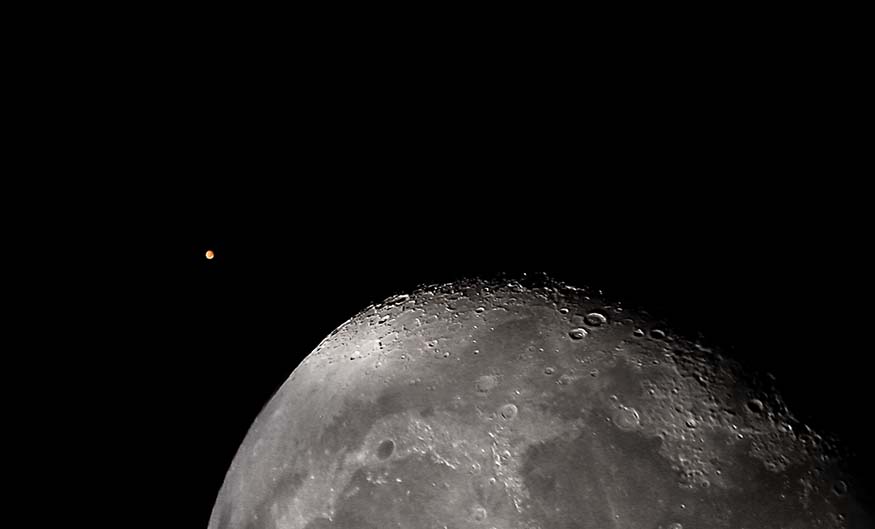
BEAUTY: 
BRAGGING RIGHTS: A beautiful sight
HOW EASY IS IT TO SEE? Best with small telescope
TYPE: Special event
DISCOVERED: Known since antiquity
We have an amazing capacity for pattern recognition. The earliest peoples mastered the recurring cycle of the moon to keep time. The Egyptians used the appearance of Sirius in the morning twilight (around June 22nd at that time) as a sign that the waters of the Nile would begin to rise (generally around June 25th). The sky was full of patterns that affected daily life.
But sometimes our pattern recognition goes awry. To the ancients, the sight of two bright planets close together in the sky must have begged for explanation: What did it portend? Good? Ill? No matter what happened next, the death of a king or the end of a drought, people would attribute it to the planetary alignment. Astrology is pattern recognition devoid of scientific rigor. It is pareidolia: seeing the face of Elvis in burnt toast. And yet the beauty of these patterns cannot be denied. Seeing Jupiter near Venus or Mars near the moon is a special treat. Alone in the sky, any planet is lost amid the myriad anonymous stars, but it’s impossible to ignore the sight of two or more bright planets together. The familiar sky, taken for granted in our busy lives, again becomes a source of wonder. All because of a pattern.
Check your local listings. Conjunctions and occultations don’t come on a recurring schedule. Check the calendar on publications such as Astronomy and Sky & Telescope for upcoming events. Conjunctions between the moon and a planet are the most common and occur when the moon and a planet appear in the sky together. In rare cases they get so close that the moon covers up the planet: this is an occultation, not to be missed. Seeing two planets together can be thrilling, but seeing three near each other—often called a trio—is a rare but rewarding treat.
Close up views. In some cases two planets get close enough that you can see them together in a telescope. These views are fantastic because you can see them as real objects right next to each other. The planets need to be within half a degree for this to be possible—roughly a full moon in diameter. But the closer they are, the more you’ll be able to magnify.
Other conjunctions. Conjunctions between a planet and a deep-sky object are also wonderful sights through a telescope. Venus and other planets sometimes appear near the Pleiades.